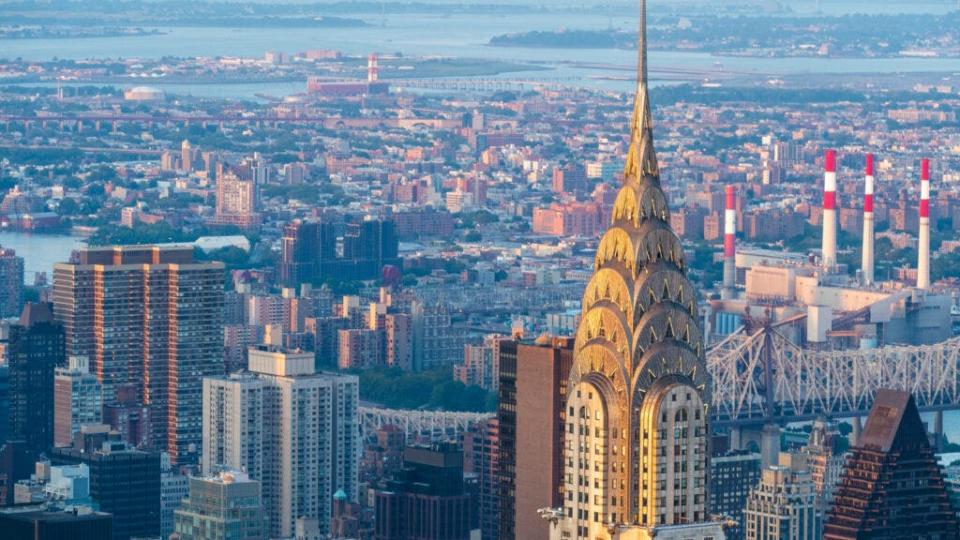New York City's Manhattan Island Is Sinking Beneath The Weight Of Skyscrapers

New York City's Manhattan Island is sinking under the weight of skyscrapers, and some geologists are predicting water levels could rise 30 inches by 2050.
New York City's skyline is one of its most famous and instantly recognizable features. However, scientists fear that the weight of all that concrete is causing the island to sink. They estimate that the sinking, combined with rising sea levels, could see the water level around Manhattan rise as much as 30 inches by the year 2050.
The Subsidence Factor
There is an old saying that if a hero lives long enough, they will eventually become a villain. New York City's Manhattan Island may be about to see that adage play out. For decades, the skyscrapers that make up the New York skyline have been a living symbol of both the city itself and the power of its financial might. Now, they may pose a threat to the long-term viability of Manhattan and the entire financial district.
New York's skyscrapers, which began rising in the early 1900s, are as much a part of New York as the Yankees or its subway system. To this day, the value of Manhattan commercial or residential real estate is among the highest in the world, and much of that is because of the giant buildings that seem to defy the laws of gravity.
Unfortunately, there is no defying Mother Nature, and all these skyscrapers are contributing to a phenomenon known as subsidence. Subsidence is a word used to describe the degree to which land sinks because of natural factors such as erosion and flooding or human activity such as building. In New York City's case, it is estimated that the total weight of the skyline is putting over 1.5 trillion tons of pressure on the ground below.
Don't Miss:
Investing in real estate just got a whole lot simpler. This Jeff Bezos-backed startup will allow you to become a landlord in just 10 minutes, and you only need $100.
Elon Musk has reportedly bought 6,000 acres of land just outside of Austin. Here’s how to invest in the city’s growth before he floods it with new tech workers.
How Much Is It Sinking?
Scientists estimate New York City's financial district is sinking at an average rate of between 1 and 2 millimeters per year. That may not seem like much until you consider that SeaLevelRise.org estimates that New York is sitting nine inches lower than it was 50 years ago. New York City's internal estimates are calling for water levels to rise between 8 inches and 30 inches by 2050. Those extra millimeters will start adding up quickly.
It's important to realize that the sea level estimates are for water levels at normal tide. New York's financial district sits precariously above sea level now. High tide, storm surges and flooding could be more intense if there are an extra 8 inches to 30 inches of water to go around. Flooded subway tunnels, buildings and streets could become the norm and render Manhattan unsuitable as a financial district or place to live.
New York Is Not Alone
New York City is far from the only metropolis at risk of sinking and sea level rise. The Gulf Coast, Jakarta, Indonesia, and many other cities are funding major infrastructure projects to stave off or minimize the damage posed by climate change. The combined cost of these programs will be in the trillions of dollars.
There is simply no way that kind of spending won't affect the global real estate market. The only question now is how profound it will be. Everything from construction costs to insurance and financing will become radically more expensive. This only underscores the importance of doing everything possible today to mitigate or prevent the worst effects of climate change from manifesting themselves in the future.
You Don't Want To Miss This Virtual Event
Real Estate Reimagined: Capitalizing On Unique Opportunities In A Changing Market
Thursday, December 21 | 11 AM EST
Benzinga is hosting an insightful webinar dedicated to the dynamic world of real estate investing. The expert panel, featuring the most innovative industry leaders, will guide you through the intricacies of the current market and the unique opportunities available to retail investors.
Read Next:
Most investors are priced out of buying real estate in the highest-growth markets, but this genius strategy will allow almost anyone to get a piece of the action.
Collecting passive income from real estate just got a whole lot simpler. A new real estate fund backed by Jeff Bezos gives you instant access to a diversified portfolio of rental properties, and you only need $100 to get started.
Miami’s housing market value has soared over 86% in the last two years and some investors found a simple strategy to profit from it. Here’s how you can do the same in these four cities poised for massive growth.
"ACTIVE INVESTORS' SECRET WEAPON" Supercharge Your Stock Market Game with the #1 "news & everything else" trading tool: Benzinga Pro - Click here to start Your 14-Day Trial Now!
This article New York City's Manhattan Island Is Sinking Beneath The Weight Of Skyscrapers originally appeared on Benzinga.com
© 2023 Benzinga.com. Benzinga does not provide investment advice. All rights reserved.

 Yahoo Finance
Yahoo Finance 